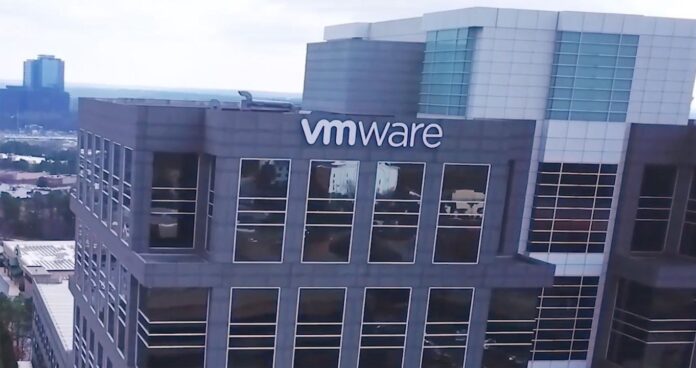DPU acceleration is now supported using Nvidia’s Bluefield 2 chips and Dell PowerEdge servers
SAN FRANCISCO: At its VMware Explore event Tuesday, VMware made several announcements, including major updates to its vSphere cloud compute and vSAN cloud storage software, sweeping changes to its edge compute platform and multiple security enhancements aimed at improving performance and efficiency for increasingly complex and highly distributed cloud and edge environments.
Working with Nvidia and Dell, VMware said the new releases incorporate support for Nvidia’s Bluefield 2 Data Processing Units (DPUs). The net result, said Nvidia, is better performing and more secure data center hardware operating on edge and multi-cloud architectures. The new DPU effort, previously known internally as Project Monterey, promises better efficiency, lower latency, and improved security for enterprises running vSphere on increasingly distributed cloud workloads.
“VMware research shows 580 million modern workloads are expected to run on diverse, distributed environments spanning public cloud, on-premises, edge, telco clouds and hosted clouds by 2024,” said the company.
VMware claims that the switch to DPU support can see up to 20% fewer CPU cores being used to do the same work, with up to 36% faster transaction rates and up to 27% lower latency. VMware claims businesses can run higher workloads and drive more traffic with fewer resources than before, using Bluefield 2 DPUs. What’s more, said VMware, offloading network and security infrastructure functions has another practical benefit: it’s more secure. vSphere 8 also sees key improvements in Graphic Processing Unit (GPU) acceleration by doubling the number of virtual GPUs per Virtual Machine (VM) to four.
Edge Compute Stack 2
VMware also introduced Edge Compute Stack 2, a major new update to the edge platform the company introduced a year ago during its VMworld virtual event. A new release of Tanzu Kubernetes Grid supports smaller cluster sizes down to one control node and one worker node, which VMware says will enable cloud app containers to run more efficiently on commercial off the shelf (COTS) server hardware. Edge Compute Stack 2 gains performance improvements, supporting GPU passthrough to accelerate Artificial Intelligence (AI) and Machine Learning (ML) functions and increase real-time workload density. What’s more, VMware said it will extend support for operational technology and information technology hardware which runs on non-Intel processors.
“VMware will extend support for ARM, Atom, and Core (i3/i5/i7/i9) processor-based device edge hardware, allowing you to simultaneously run IT and OT workloads and workflows on a single stack,” the company said.
VMware’s Edge Compute Stack efforts also extend to a new partnership with Japanese telecom giant NTT. Announced Monday, the alliance combines Edge Compute Stack with NTT’s P5G, the company’s private 5G service.
VMware also announced Private Mobile Network, a new 4G/5G private mobile connectivity solution for the enterprise. The new service, built on Edge Compute Stack, promises to integrate with existing IT management platforms, enabling a single Private Mobile Network orchestrator to operate multi-tenant private 4G and 5G mobile networks. A beta version of the new service is coming by the end of October, VMware said.
Multi-cloud networking and security improvements
VMware announced Project Northstar, a major revamp of NSX, its network virtualization and security visualization platform. Project Northstar combines multi-cloud networking, security, workload mobility and end-to-end threat detection and response, using a centralized console for simplified IT management.
“This family of services includes network & security policy management, network detection and response (NDR), network visibility and analytics (NSX Intelligence), advanced load balancing (ALB), and workload mobility (HCX) for private cloud environments and VMware Cloud deployments,” said VMware.
NSX networking and security functions can now be implemented on DPUs, the company noted.
VMware also announced changes to Carbon Black, its Endpoint Detection and Response (EDR) security platform aimed at reducing laterally-moving cyber security threats. Lateral movement enables a cyber attacker to avoid detection and retain access even after being discovered on the initially compromised endpoint. Now available in early access, Carbon Black gains embedded network detection and visibility to endpoints without having to make any changes to infrastructure or endpoints.
Project Trinidad, now in tech preview, deploys sensors on Kubernetes clusters to detect anomalous behavior, and leans on ML and business logic inference to shut down potential threats.

